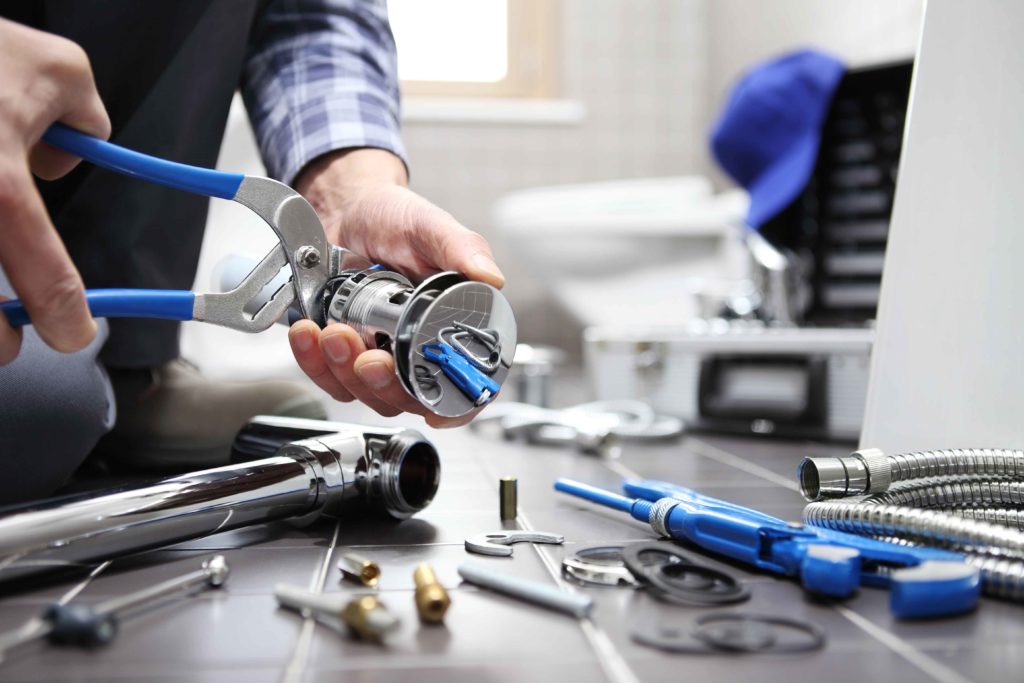Right here further down you might get some great help and advice on the subject of 4 Common Reasons for a Leaky Faucet.

Trickling taps might look like a small inconvenience, however their influence surpasses simply the annoyance of the noise. From drainage to sustaining unnecessary economic costs and health and wellness risks, overlooking a leaking faucet can result in various consequences. In this article, we'll delve into why it's vital to address this common house concern promptly and effectively.
Wastage of Water
Environmental Influence
Leaking faucets contribute considerably to water wastage. According to the Environmental Protection Agency (EPA), a single tap leaking at one drip per secondly can lose more than 3,000 gallons of water per year. This not just strains water sources yet also influences ecological communities and wild animals dependent on them.
Financial Prices
Boosted Water Bills
Past the ecological impact, trickling faucets can blow up water bills considerably. The collected wastefulness in time converts into higher energy expenses, which might have been stayed clear of with timely repair services.
Potential Residential Or Commercial Property Damages
Moreover, extended trickling can lead to damage to components and surface areas bordering the tap. Water buildup can cause staining, rust, and even architectural issues if left ignored, leading to extra fixing prices.
Wellness Problems
Mold and Mold Development
The continuous existence of wetness from a leaking faucet develops an ideal environment for mold and mildew and mold growth. These fungis not just jeopardize indoor air quality yet additionally present wellness threats, specifically for people with respiratory system conditions or allergic reactions.
Waterborne Diseases
Stationary water in leaking taps can come to be a breeding ground for bacteria and various other virus, boosting the danger of waterborne illness. Impurities such as Legionella germs prosper in stationary water, possibly causing major illnesses when ingested or inhaled.
Do it yourself vs. Professional Repair work
Benefits and drawbacks of Do It Yourself Repair Work
While some may attempt to deal with a leaking tap themselves, DIY repair services include their own collection of difficulties. Without proper understanding and tools, do it yourself attempts can exacerbate the concern or lead to insufficient repair work, lengthening the issue.
Benefits of Employing a Professional Plumber
Employing a professional plumber makes sure that the underlying cause of the leaking tap is attended to effectively. Plumbing technicians have the expertise and devices to identify and fix tap issues effectively, conserving time and decreasing the threat of further damage.
Step-by-Step Overview to Dealing With a Dripping Tap
Devices Required
Before trying to repair a leaking faucet, gather the essential tools, including a flexible wrench, screwdrivers, substitute components (such as washing machines or cartridges), and plumber's tape.
Typical Faucet Issues and Their Solutions
Determine the kind of faucet and the certain issue causing the drip. Common troubles consist of worn-out washers, rusty valve seats, or faulty O-rings. Describe producer instructions or on-line tutorials for detailed support on repair services.
Safety nets
Normal Upkeep Tips
To avoid dripping taps, perform regular maintenance such as cleansing aerators, examining for leakages, and replacing damaged parts promptly. Furthermore, take into consideration setting up water-saving tools or upgrading to much more reliable fixtures.
Value of Prompt Services
Dealing with leaking taps as soon as they're seen prevents additional water waste and possible damages, inevitably conserving both water and money in the long run.
Influence On Residential Or Commercial Property Value
Assumption of Well-Maintained Property
Keeping a building in good condition, including addressing upkeep issues like trickling faucets, enhances its regarded value and charm among prospective customers or renters.
Influence on Resale Worth
Properties with well-kept plumbing components, consisting of faucets, command higher resale worths in the property market. Dealing with leaking taps can add to a favorable impression during residential property examinations and negotiations.
Environmental Responsibility
Private Contribution to Conservation
Taking obligation for taking care of leaking faucets lines up with wider initiatives toward water conservation and environmental sustainability. Every individual's activities collectively make a considerable effect on preserving precious sources.
Lasting Living Practices
By prioritizing prompt repairs and adopting water-saving routines, individuals add to sustainable living practices that benefit both present and future generations.
Conclusion
Addressing a leaking tap goes beyond simple comfort; it's a crucial action towards conserving water, lowering monetary expenses, and protecting health and home. Whether through do it yourself repair services or professional aid, acting to repair trickling taps is a little yet impactful means to promote liable stewardship of sources and contribute to a healthier, a lot more lasting future.
Most Common Reasons for a Leaky Faucet and How to Stop the Drip
Whether it’s your kitchen faucet leaking or a bathroom faucet leaking, one leaky faucet can waste anywhere from three to 30 gallons of water every single day. If the constant drip-drip-drip doesn’t get your attention, your water bill will. The good news is that, by following a few simple steps, chances are pretty good you can fix the problem yourself.
Why is it dripping?
Before you start taking things apart, let’s break down some of the most common causes of a leaky faucet.
Bad O-ring.
A cartridge is a valve that controls the flow of water into the faucet spout. On cartridge faucets there’s an O-ring—the little disc attached to the stem screw that holds the faucet handle in place. If it’s loose or worn-out, it can cause your sink handle to leak. Of course, the cartridge itself could be worn out. If that’s the case, make sure you replace it with the exact same kind.
Corroded valve seat.
The valve seat connects the faucet and the spout. If the leak seems to be coming from the spout, it might be because a buildup of water sediment has corroded the valve seat.
Worn-out washers or seals.
A leaky spout could be caused by a bad washer that rests against the valve seat. It’s just a matter of time before friction takes its toll. It could also be the wrong size washer or one that’s been installed incorrectly. Water sediments can also corrode inlet and outlet seals.
Water pressure.
If the faucet only drips now and then, or when you turn the handles a certain way, you should probably check your home’s water pressure.
Loose or broken parts.
The adjusting ring and packing nuts in the stream screw can become loose over time, causing your sink handle to leak. Try tightening or replacing the packing nut. If the leak is coming from the pipes underneath the sink, you probably have a broken pipe or fitting. If that’s the case, you should definitely call a plumber.
Know your faucet.
Faucets come in a variety of types. Each one has its own assembly—and its own possible causes of leaks. Learning about the four most common kinds of faucets will help you know how to take them apart and make any repairs.
How to stop a leaky faucet
Fixing that leaky faucet doesn’t have to take a lot of time, money, or expertise. It’s usually a simple matter of replacing a worn-out washer or gasket, a loose O ring, or another part. Chances are really good you can do this yourself if you follow these simple steps.
Shut off the water.
Before you tackle the faucet, cut off the water supply to the sink. There should be one valve for hot and one for cold. Hand-turn them clockwise with your hands till they close. If there are no valves under the sink, head to the basement and shut off the main water supply to the house. Then turn on the faucet until it empties out the water that’s still in the line and you’re ready to start. It’s a good idea to cover the sink drain with a plug or a rag so you don’t lose any small pieces and parts while you’re working.

I'm certainly very enthusiastic about Leaky Faucets: Why They Happen & What to Do About Them and I hope you liked the new blog posting. You should pause to distribute this blog if you liked it. Thank you for your time. Come back soon.